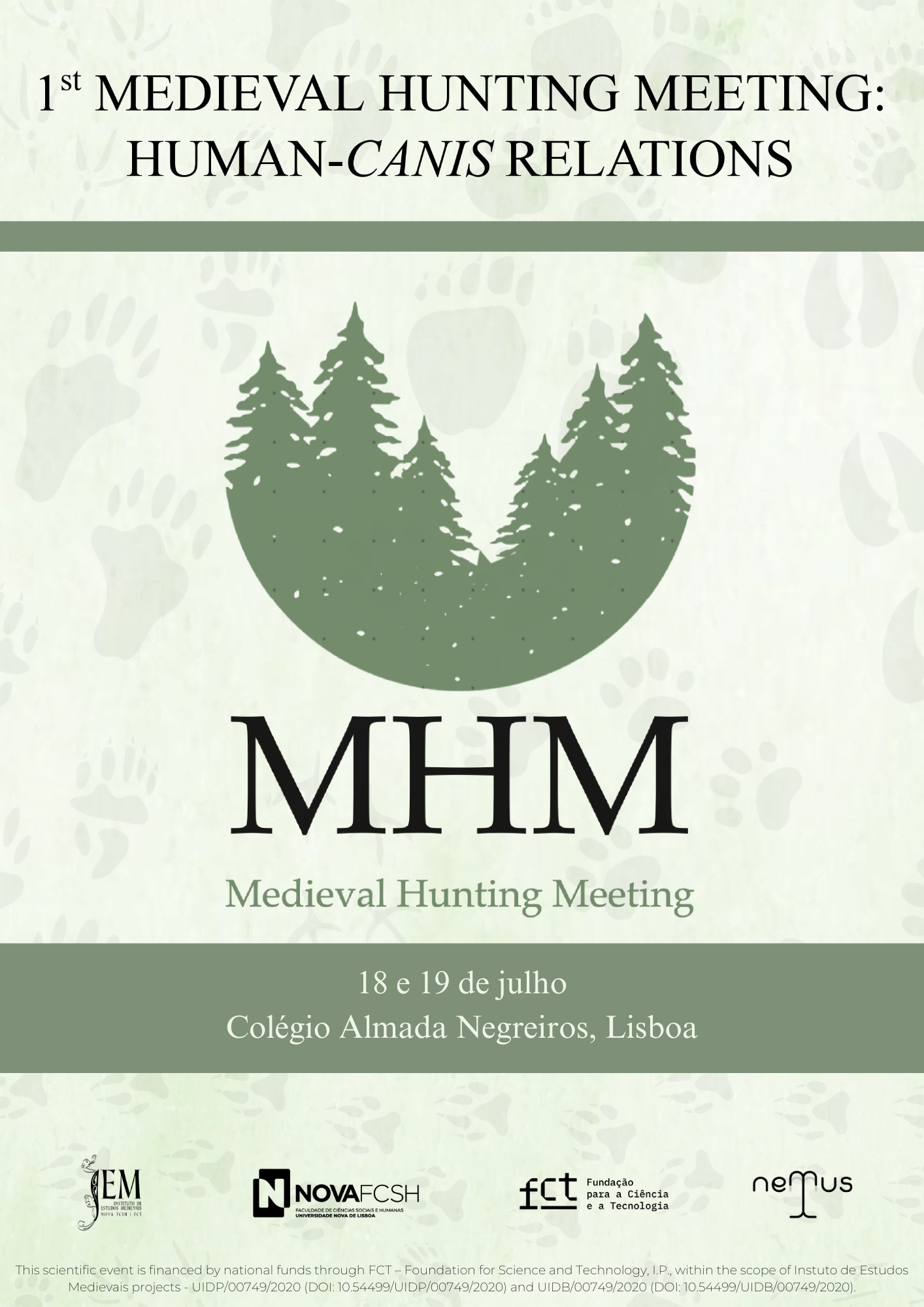
The 1st Medieval Hunting Meeting: human-canis relations, hosted by the Institute for Medieval Studies (IEM NOVA/FCSH) and the Network for the Environment in Medieval Usages & Societies (NEMUS), is held in Lisbon, at NOVA University’s Colégio Almada Negreiros, (room SD, ground floor) on 18 and 19 July 2024.
In the context of Medieval Europe, what we now classify as canis were divided into two broad groups: domestic and wild – in other words, dog and wolf. The dog (canis lupus familiaris) has almost always been man’s best friend, as a watchful guard, a faithful companion, and also a hunting partner. As to the wolf (canis lupus), widely despised and persecuted, was often perceived as a threat, the enemy of livestock and man. However, these were not always necessarily the attributes associated with canis, since these could vary depending on the context and even completely contradict the most commonly held beliefs. Although human communities have developed very different attitudes towards wolves and dogs throughout time, their common biological ancestry is a given. Over millennia, while domestic canids were systematically bred by humans into a wide array of animals with distinct physiognomies and functions, dogs and wolves progressively diverged ever further apart.
This meeting delves into the complexities of the relationship between canis and human. The first iteration of the Medieval Hunting Meetings is dedicated to this topic, addressing key questions that include: Which sort of relation did humans have with wolves and dogs in the Middle Ages? Did Medieval humans contribute to the proximity with, or disaffection from, these animals? What role did these creatures play in the sphere of hunting? To this end, we have brought together a series of contributions, coming from quite different perspectives, to reflect on the understanding of inter-species coexistence in the longue durée, largely based on the Medieval Iberian record but far from limited to it. We look forward to the combined insights into our past life with canis, from the ecological, biological, archaeological, artistic, and other approaches taken in these papers.
